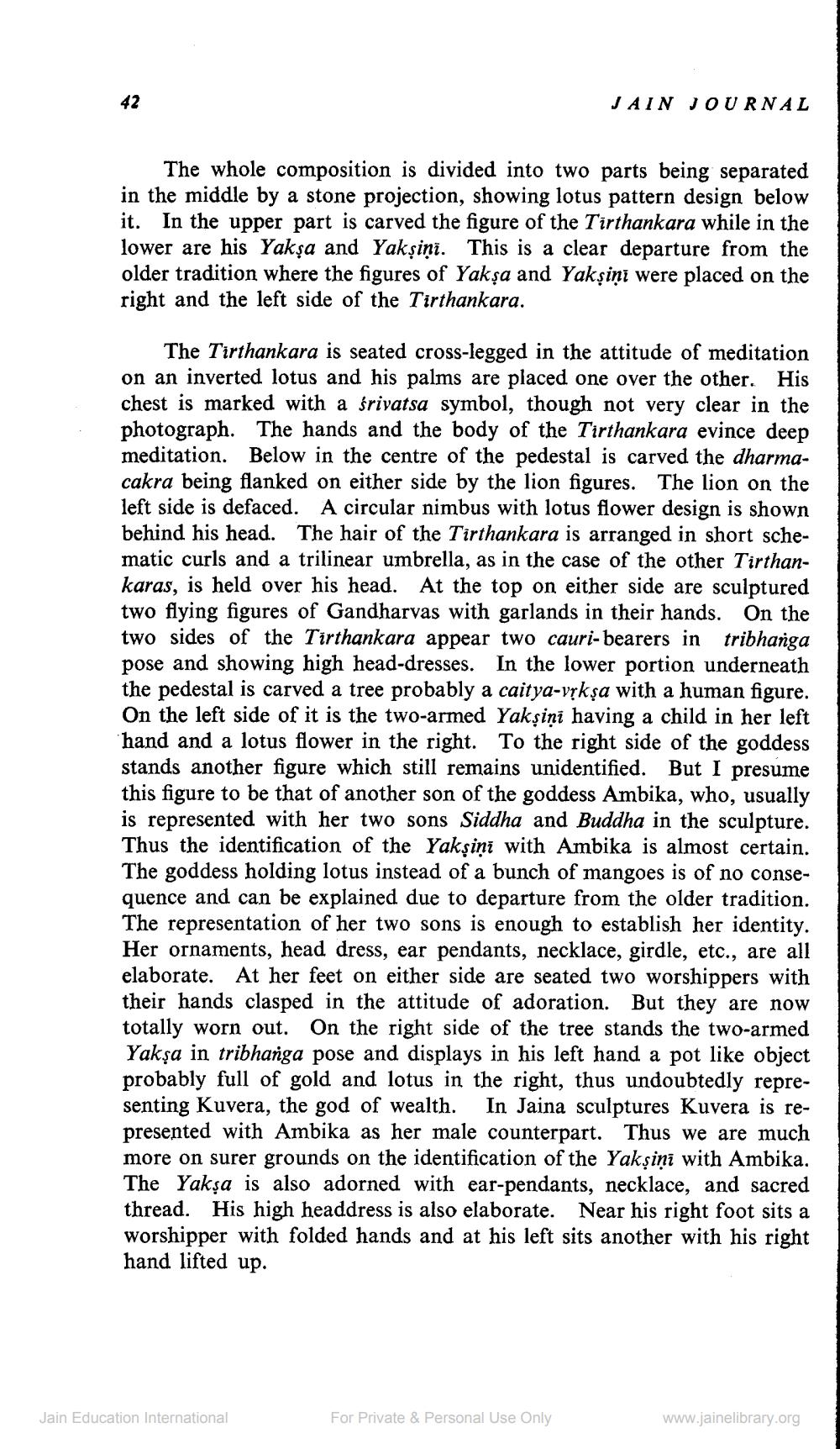________________
122
42
The whole composition is divided into two parts being separated in the middle by a stone projection, showing lotus pattern design below it. In the upper part is carved the figure of the Tirthankara while in the lower are his Yakṣa and Yakṣiņi. This is a clear departure from the older tradition where the figures of Yakşa and Yakşini were placed on the right and the left side of the Tirthankara.
JAIN JOURNAL
The Tirthankara is seated cross-legged in the attitude of meditation on an inverted lotus and his palms are placed one over the other. His chest is marked with a śrivatsa symbol, though not very clear in the photograph. The hands and the body of the Tirthankara evince deep meditation. Below in the centre of the pedestal is carved the dharmacakra being flanked on either side by the lion figures. The lion on the left side is defaced. A circular nimbus with lotus flower design is shown behind his head. The hair of the Tirthankara is arranged in short schematic curls and a trilinear umbrella, as in the case of the other Tirthankaras, is held over his head. At the top on either side are sculptured two flying figures of Gandharvas with garlands in their hands. On the two sides of the Tirthankara appear two cauri-bearers in tribhanga pose and showing high head-dresses. In the lower portion underneath the pedestal is carved a tree probably a caitya-vṛkṣa with a human figure. On the left side of it is the two-armed Yakşini having a child in her left hand and a lotus flower in the right. To the right side of the goddess stands another figure which still remains unidentified. But I presume this figure to be that of another son of the goddess Ambika, who, usually is represented with her two sons Siddha and Buddha in the sculpture. Thus the identification of the Yakşini with Ambika is almost certain. The goddess holding lotus instead of a bunch of mangoes is of no consequence and can be explained due to departure from the older tradition. The representation of her two sons is enough to establish her identity. Her ornaments, head dress, ear pendants, necklace, girdle, etc., are all elaborate. At her feet on either side are seated two worshippers with their hands clasped in the attitude of adoration. But they are now totally worn out. On the right side of the tree stands the two-armed Yakşa in tribhanga pose and displays in his left hand a pot like object probably full of gold and lotus in the right, thus undoubtedly representing Kuvera, the god of wealth. In Jaina sculptures Kuvera is represented with Ambika as her male counterpart. Thus we are much more on surer grounds on the identification of the Yakṣini with Ambika. The Yakṣa is also adorned with ear-pendants, necklace, and sacred thread. His high headdress is also elaborate. Near his right foot sits a worshipper with folded hands and at his left sits another with his right hand lifted up.
Jain Education International
For Private & Personal Use Only
www.jainelibrary.org




